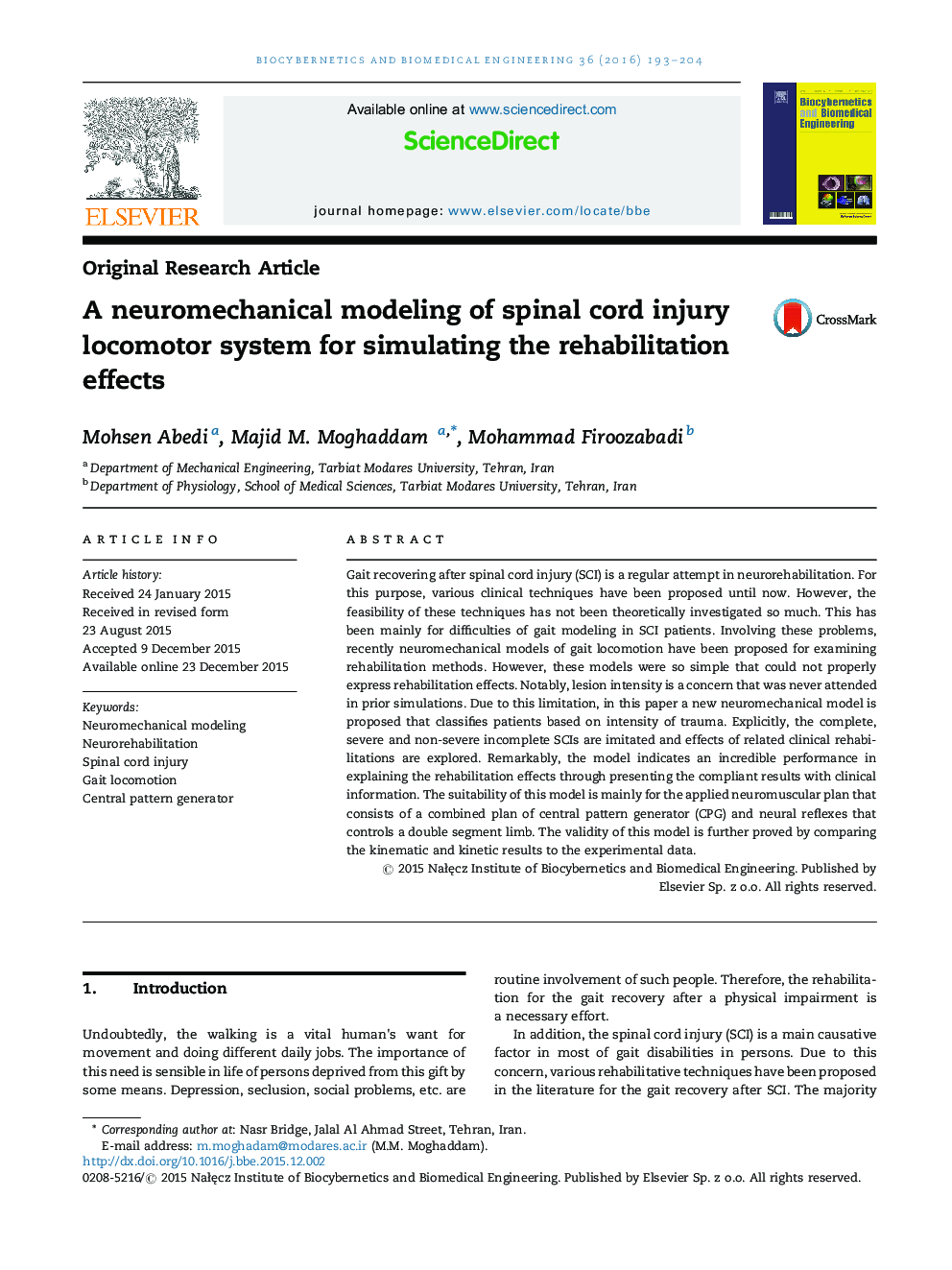| Article ID | Journal | Published Year | Pages | File Type |
|---|---|---|---|---|
| 5122 | Biocybernetics and Biomedical Engineering | 2016 | 12 Pages |
Gait recovering after spinal cord injury (SCI) is a regular attempt in neurorehabilitation. For this purpose, various clinical techniques have been proposed until now. However, the feasibility of these techniques has not been theoretically investigated so much. This has been mainly for difficulties of gait modeling in SCI patients. Involving these problems, recently neuromechanical models of gait locomotion have been proposed for examining rehabilitation methods. However, these models were so simple that could not properly express rehabilitation effects. Notably, lesion intensity is a concern that was never attended in prior simulations. Due to this limitation, in this paper a new neuromechanical model is proposed that classifies patients based on intensity of trauma. Explicitly, the complete, severe and non-severe incomplete SCIs are imitated and effects of related clinical rehabilitations are explored. Remarkably, the model indicates an incredible performance in explaining the rehabilitation effects through presenting the compliant results with clinical information. The suitability of this model is mainly for the applied neuromuscular plan that consists of a combined plan of central pattern generator (CPG) and neural reflexes that controls a double segment limb. The validity of this model is further proved by comparing the kinematic and kinetic results to the experimental data.
